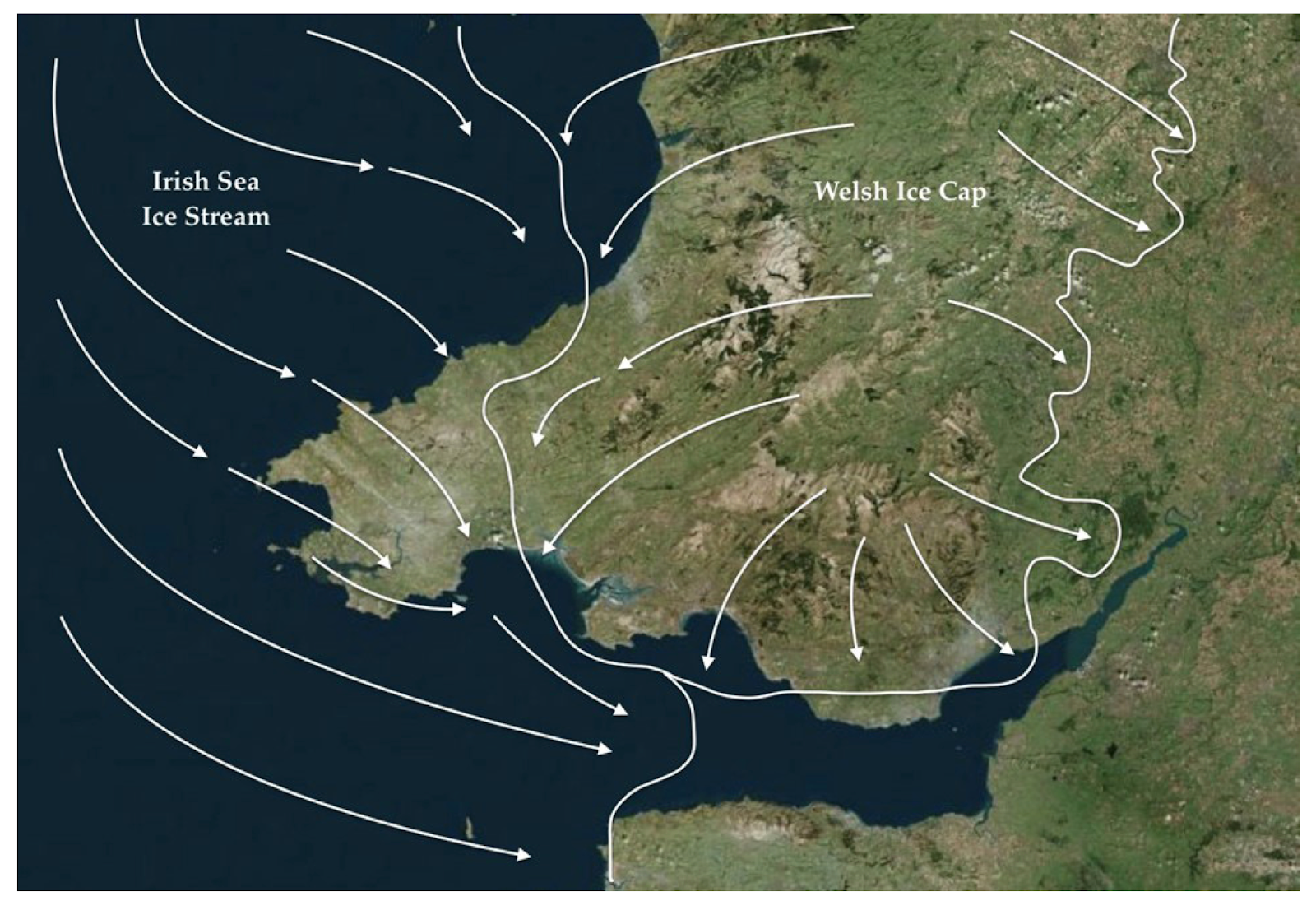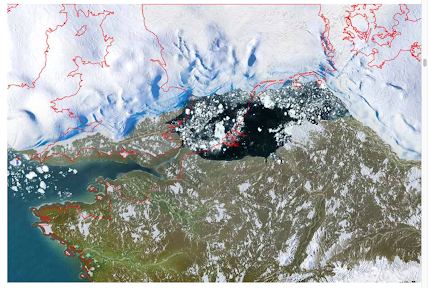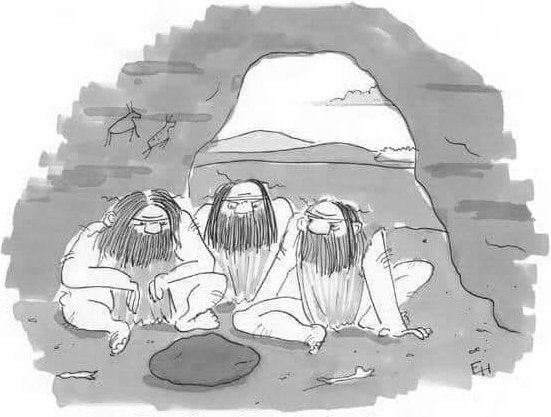
The Schuchert Flod (river or flood in Danish) -- one of the most dramatic meltwater rivers in Greenland. Four different levels of resolution.......
The Schuchert River originates as the stream carrying the meltwater from the Schuchert Glacier and its tributary glaciers in the northern part of the Staunings Alps. There are ten glaciers feeding into the meltwater river, most of them on the eastern flank of the mountain range. These are genuine alpine glaciers with small catchments -- very different from the glaciers fed from the plateau ice caps in other parts of east Greenland.
Braided rivers like this are hugely impressive -- not least because of the noise that they make. It's a non-stop thundering that drowns out all the other sounds in the Arctic environment. But they are inadequately studied by hydrologists and geomorphologists, partly because of their remote locations and partly because they are dangerous and difficult to work on. They have relatively steep gradients, have high velocities and huge sediment loads in the larger clast sizes, namely boulders and cobbles. The water is also cloudy because of the large loads of sand, silt and clay carried in suspension. The larger clasts tend to be moved over short distances before lodging or sticking, with blockages causing the river water to spill laterally out of one temporary channel and to create other channels. So the channel arrangement that we see today are in constant flux. They will be different tomorrow, and any attempt to create an accurate channel map is rather futile.......
The concept of equilibrium does not make much sense here, because there are very powerful diurnal and seasonal rhythms in river water velocity and volume. In the winter the Schuchert Flod has no water flow at all, and it is cold and dark. But as daylight (and warmth) returns during the spring thaw it starts to flow as the lowland seasonal snowcover begins to melt. As the "melting front" moves up into the valleys and onto the glaciers, in May and June, the volume of water flow inexorably increases. I suspect that the peak flow month will be July. At that time nearly all of the water in the river will be coming from the "feeder" glaciers in the mountains. Also during July and August the diurnal rhythm becomes more marked, as twilight and then darkness gradually return, with cooler conditions and reduced glacier melting in the early hours of the morning. If you have to cross a braided stream in the Schuchert valley catchment, it's easier to do it at 4 am than it is at 4 pm. By September, on the glaciers, there are a few hours of sub-zero temperatutes on the glaciers every night.
The chaotic spring thaw that happens on the big rivers of Alaska and Arctic Canada, involving the breakup of the river ice and the downriver transport of huge ice blocks which can destroy roads, bridges and houses does not happen in the Schuchert Valley, because the braided stream channels are not deep enough or wide enough for the creation of thick floating river ice. However, there can be catastrophic "pulses" of meltwater flowing down braided streams such as the Schuchert Flod because of the collapse upstream of ice dams holding meltwater lakes in ice-front situations such as that of the Roslin Glacier.
The great loop of moraine and dead ice topography associated with a surge of the Roslin Gletscher, which pushed all the way across the braided river plain. The Schuchert Flod is here squeezed into a single channel, after which it re-assumes its braided pattern downstream. The meltwater lakes are ephemeral; and if one of them bursts out, a short lived catastrophic flood will work its way down the river to the sea. In Iceland this is called a jøkulhlaup, and when one comes along you don't want to be anywhere near it........
It's because of this inherent variability in the multiple channels of the braided river that the Schuchert Flod is viewed as essentially uncrossable at the height of the summer season. You cannot cross -- even with ropes -- where the braided river is at its narrowest, because here the channels are very deep and fast-flowing. But if you try to cross where the braided river is maybe a kilometre wide and where there are multiple channels, you may find that although no single river segment is more than waist deep, you have problems with ropes and stable anchoring points. In a four-man crossing party the lead man has to be belayed to a support man who stands on a stable (and preferably dry) "island", and he in turn is supported by the third and fourth men on the rope. Only one man at a time should be in the water, trying to avoid being swept off his feet and also to avoid mobile boulders and cobbles on the river bed. If you have a 25 kg backpack, then it becomes even more hazardous. There is a practical limit to the amount of rope you can use, and it can happen that a four-man crossing party can become stranded, when they encounter an uncrossable channel ahead of them and when the channels they have already crossed become deeper because of a raised water level or a change in channel arrangement. In places the Schuchert Flod is 4 km wide, and any attempt to cross it even in the early hours of the morning would be foolhardy in the extreme.
In 1962, while Dave Sugden and I (expedition leaders) were in Kjove Land, one of our expedition members with a four-man party was crossing the Schuchert Flod c. 30 km to the north when he was swept off his feet and carried 100m downstream. Against all the rules, he was not using a rope, but it's possible that his loaded rucksack provided some buoyancy, and the river spat him out onto a gravel bank from which the others were able to rescue him. He could have been killed. When Dave and I found out about this incident, we were not best pleased.........
The southernmost section of the Schuchert Flod, where the braided river runs into the tidal mudflats. The mudflats are a "graveyard" for stranded small icebergs and bergy bits, with larger bergs stranded on the outer edge of the delta

















































